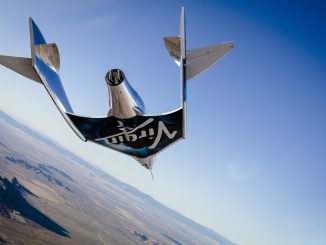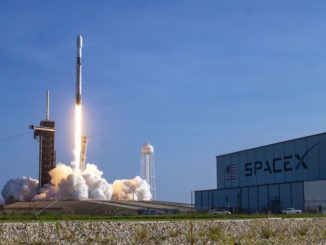STORY WRITTEN FOR CBS NEWS & USED WITH PERMISSION
Astronauts Chris Cassidy and Bob Behnken completed a 5-hour, 29-minute spacewalk today to prepare the International Space Station for future upgrades.
READ MORE: https://t.co/2F2xvbK3GT pic.twitter.com/Db4VnRiXYa— Spaceflight Now (@SpaceflightNow) July 21, 2020
Space station commander Chris Cassidy and Robert Behnken floated back outside Tuesday for their fourth spacewalk in less than a month, completing preparations for future upgrades including the eventual installation of an airlock that will allow commercial experiments to be moved into and out of vacuum as required.
The astronauts originally planned four spacewalks to install replacement batteries in the station’s solar power system, but that work was completed ahead of schedule during three excursions on June 26, July 1 and July 16. The fourth spacewalk was replanned as a result, and mission managers added a variety of unrelated tasks.
Floating in the Quest airlock, Cassidy and Behnken switched their spacesuits to battery power at 7:12 a.m. EDT to officially kick off the 231st spacewalk in station history, the seventh so far this year and the 10th for both astronauts.
When the excursion ended five hours and 29 minutes later, at 12:41 p.m., Behnken’s total spacewalk time stood at 61 hours and 10 minutes over his 10 excursions, moving him up to No. 4 on the list of most experienced spacewalkers. Cassidy’s total of 54 hours and 51 minutes across his 10 excursions moved him up to No. 9.
Their experience paid off during their four spacewalks together and Tuesday’s work was no exception. They got right to work, and shortly after floating out of the airlock, Cassidy installed a robotics tool box on a rail-mounted carrier used to move the station’s robot arm from one worksite to another.
He and Behnken then moved to the outboard side of the station’s power truss and removed two of six no-longer-needed handling, or “H,” fixtures that were used to lift and move stowed solar arrays before launch.
All six must be removed to make way for future power system upgrades. Behnken attempted to remove the first fixture during the July 16 spacewalk, but he was unable to pull it free. Engineers then developed new procedures and this time around, the astronauts were able to pry them loose.
“Congratulations again to the H fixture team for coming up with a plan … to get those two fixtures removed,” Behnken radioed later.
Cassidy and Behnken then made their way to the left side of the power truss to prepare the outer hatch of the Tranquility module — the same compartment that features the station’s multi-window cupola — for the attachment of a commercial airlock.
The Bishop Airlock, designed by Nanoracks as a commercial venture, is scheduled for launch later this year aboard a SpaceX Dragon cargo ship. Once in place, the airlock will enable research payloads and equipment to be robotically moved into and out of the space station, exposing them to the space environment as required.
The airlock will be attached to the Tranquility module’s currently unoccupied outboard port. To make way for installation, Cassidy and Behnken removed a thermal cover, repositioned protective shields and cleaned the common berthing mechanism’s attachment fittings.
Once the airlock preps were complete, Cassidy and Behnken wrapped up the day’s work by removing a damaged lens filter from an external camera assembly and routing ethernet cables for a wireless data system that will be used by externally mounted experiments.
With the spacewalk complete, the station crew will turn its attention to the launch and docking of a Russian Progress supply ship Thursday. Liftoff from the Baikonur Cosmodrome in Kazakhstan is planned for 10:26 a.m. EDT, followed by docking that afternoon.
The next major task after that will be preparations for Behnken and Douglas Hurley to return to Earth aboard the SpaceX Crew Dragon spaceship that carried them into orbit May 30.
The Crew Dragon, developed as a commercial venture, is the first piloted U.S. orbital since the final shuttle flight in 2011. Hurley and Behnken plan to undock from the station’s forward port the evening of Aug. 1 and to splash down in the Gulf of Mexico or the Atlantic Ocean off Florida’s east coast on Aug. 2 to close out a 64-day flight.



